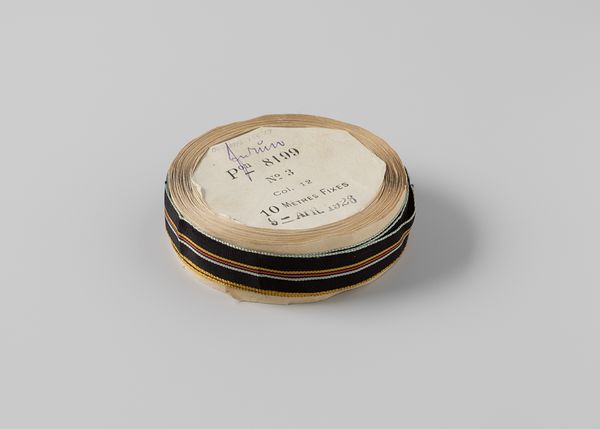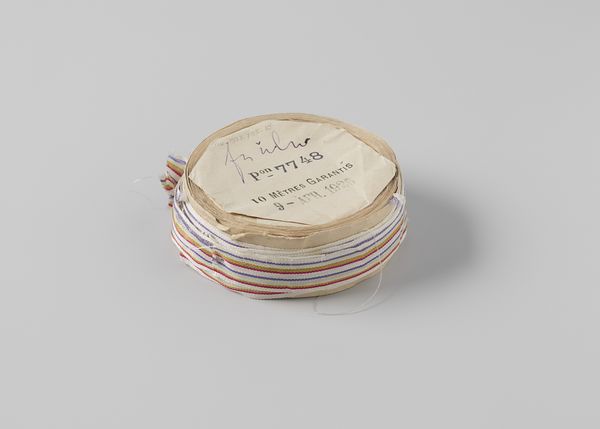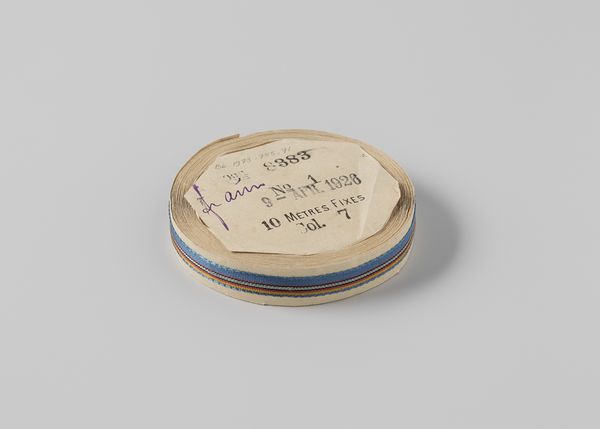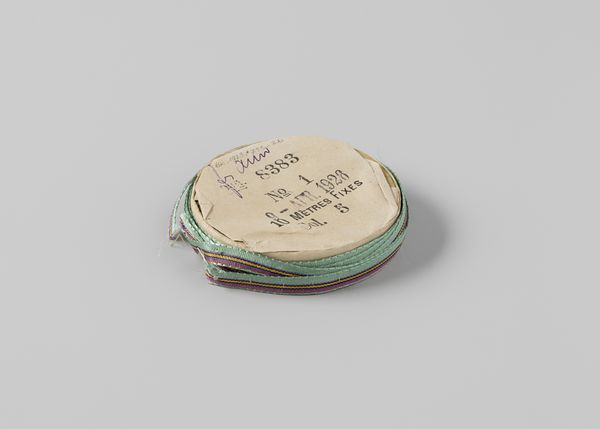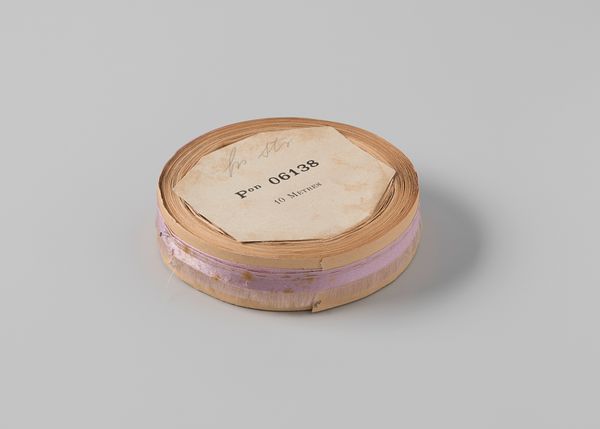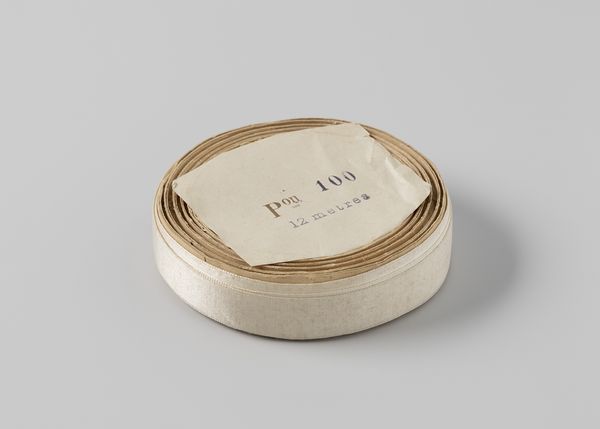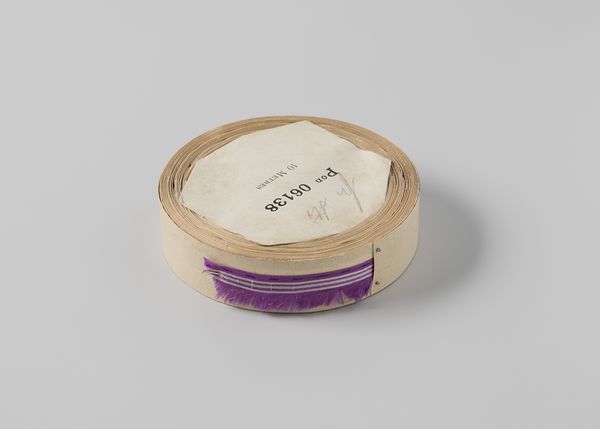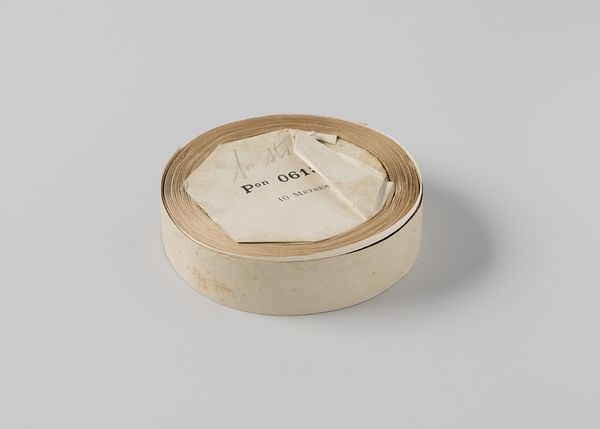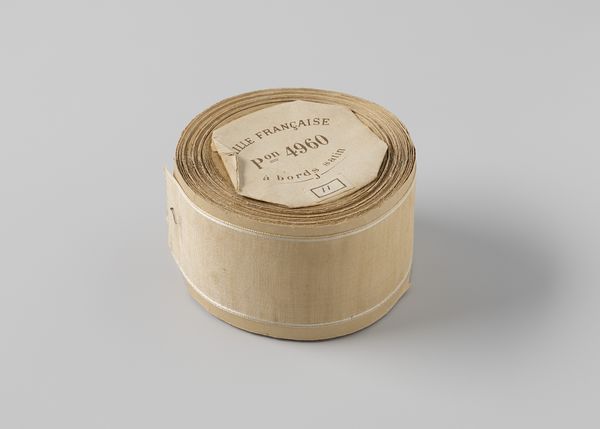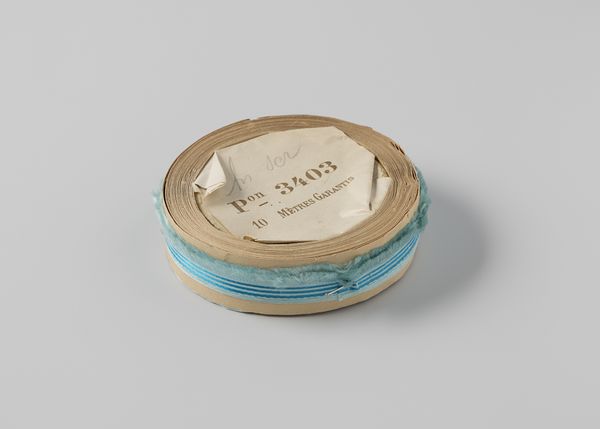
Lint op rol, gestreept, lichtblauw met lichtgroen, zwart, geel en rood before 1926
0:00
0:00
photography
#
studio photography
#
advertising product shot
#
product studio photography
#
product shot
#
still-life-photography
#
retro 'vintage design
#
photography
#
product design photgrpaphy
#
product mock up
#
graphic design product photography
#
product photography
#
retail photography
Dimensions: width 0.7 cm, diameter 9 cm
Copyright: Rijks Museum: Open Domain
Editor: We are looking at “Lint op rol, gestreept, lichtblauw met lichtgroen, zwart, geel en rood”, or "Ribbon on a Roll, Striped, Light Blue with Light Green, Black, Yellow and Red," a photograph taken before 1926, held in the Rijksmuseum collection. It's a still life of a spool of ribbon against a neutral background, a somewhat unusual subject, I think. It gives off a rather…retro vibe. How do you interpret this kind of piece? Curator: What I find interesting is how this seemingly simple image speaks volumes about consumer culture in the early 20th century. Here, Gustav Schnitzler takes a mundane, everyday item and elevates it, framing it for perhaps advertising or retail. It highlights the increasing emphasis on visual marketing and the rise of consumerism. Editor: That’s interesting. I hadn’t considered its purpose as advertising. Curator: Precisely. Think about the societal shifts occurring. Mass production was booming. Products needed branding and attractive presentation. Photography became a tool to achieve that. Where do you see the impact of those trends here? Editor: Well, the image is very crisp and clean, almost clinical. There is definitely no indication of a human presence; all focus goes toward the object on display. Also, the description stamped on the paper suggests that this "No. 1" ribbon with a manufacture or QA date, and serial or batch identifiers would not have been a unique piece. Curator: Exactly! The photograph acts as a form of documentation but also adds value to the object through aesthetics. Schnitzler makes a statement through the public's desire for carefully crafted images, perhaps. Editor: I see your point. It reflects the way that consumer culture infiltrated even art. I guess I was only considering art created within an explicitly art-historical context. Curator: It reminds us that seemingly “minor” pieces can provide significant insight into social and cultural values. A lot can be gleaned by studying everyday life and commercial practices from earlier times.
Comments
No comments
Be the first to comment and join the conversation on the ultimate creative platform.

